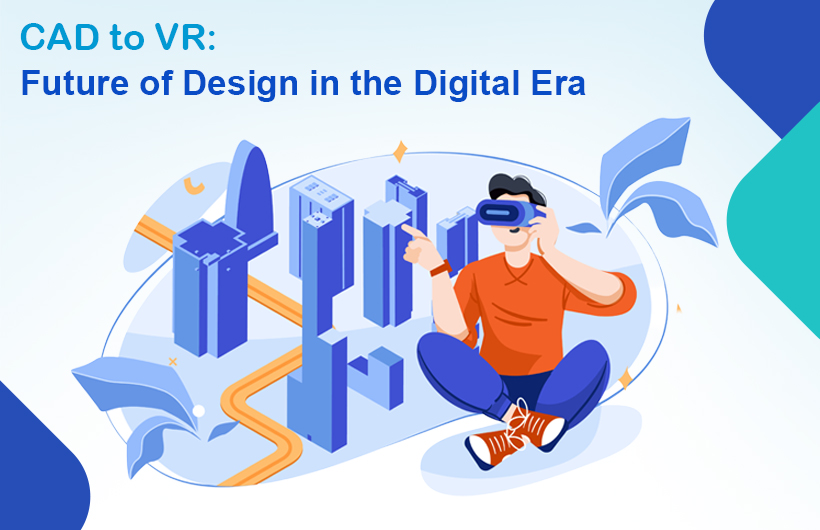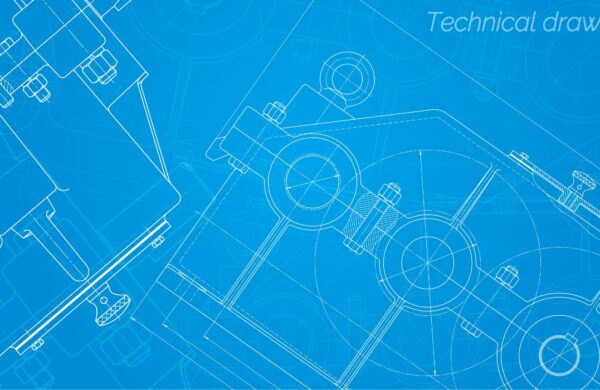The world of design and engineering in India is undergoing a revolutionary transformation. What once began as hand-drawn sketches has evolved into sophisticated Computer-Aided Design (CAD) software and now immersive Virtual Reality (VR) environments. This evolution is reshaping how mechanical engineers, architects, and industrial designers conceptualize, prototype, and refine their creations.
For innovative companies like Monarch Innovation, staying at the forefront of these advancements means leveraging cutting-edge tools that enhance creativity, precision, and collaboration.
What Does the Journey from CAD to VR Mean for Modern Design?
The shift from traditional CAD to VR is not just about technology—it’s a change in mindset. CAD has been a foundation of mechanical design and product engineering in India, allowing professionals to transform ideas into detailed 2D and 3D models. CAD enables precise mechanical drafting, simulation, and analysis, helping engineers and designers avoid costly mistakes.
However, as projects became more complex, the need for interactive and immersive visualization grew. This is where VR technology comes in. VR allows designers to step inside their creations, explore models in real time, and identify potential issues long before production begins.
Imagine a mechanical engineer walking through a factory layout in Gujarat or inspecting a complex machine assembly in Ahmedabad—all virtually. For a leading Mechanical Engineering Company in India like Monarch Innovation, integrating CAD and VR bridges imagination and reality, enabling smarter designs, error reduction, and faster project timelines.
How Is VR Revolutionising Engineering and Product Design?
The use of VR in engineering has opened doors to incredible innovation and collaboration. Traditional CAD software is powerful, but it limits users to viewing models on a screen. With VR, engineers can experience their designs in a true-to-scale, three-dimensional environment.
Here’s how this evolution is changing the industry:
1. Enhanced Visualisation and Real-Time Feedback
Designers can immerse themselves in a full-scale prototype and instantly identify design flaws, ergonomics issues, or functional constraints. This eliminates guesswork and reduces the time spent on revisions.
2. Better Collaboration Across Teams
When engineers, designers, and clients all view the same VR model, communication becomes clearer. Teams can collaborate in real time, making design approvals faster and more effective.
3. Reduced Costs and Faster Prototyping
Virtual prototypes save companies from expensive physical mockups. By moving from CAD to VR, design teams can test and validate concepts digitally, reducing waste and speeding up time-to-market.
4. Immersive Training and Simulation
VR environments allow companies to train employees using realistic simulations. This is especially useful in manufacturing and engineering, where hands-on experience is critical but often expensive or risky.
The combination of VR in engineering and traditional CAD tools has created a new digital workflow that’s more efficient, collaborative, and insightful than ever before.
What Are the Latest Digital Design Trends Shaping the Future?
As the digital landscape continues to evolve, the future of design will depend on how companies adapt to new technologies. The integration of CAD to VR is just one part of a larger wave of digital design trends transforming the industry.
Here are some of the most influential trends shaping modern design and engineering:
1. AI-Powered Design Assistance
Artificial Intelligence (AI) helps designers automate repetitive tasks, optimise designs, and predict performance outcomes. When combined with CAD and VR, AI can suggest design improvements and simulate real-world conditions effortlessly.
2. Cloud-Based Collaboration
Cloud platforms allow design teams to work from anywhere, accessing CAD and VR models in real time. This not only boosts productivity but also enhances project transparency and version control.
3. Generative Design
Generative design uses algorithms to explore multiple design possibilities based on set constraints. Engineers can use this to discover the most efficient and innovative solutions faster than ever.
4. Augmented Reality (AR) Integration
While VR offers immersive environments, AR blends digital designs with the real world. Engineers can overlay CAD models onto physical spaces, helping visualise how new equipment or structures will fit within existing setups.
5. Sustainability-Driven Design
As environmental awareness grows, digital tools are being used to analyse material efficiency, energy use, and environmental impact. This ensures that design innovation aligns with sustainability goals.
These digital design trends indicate that the future of design is more intelligent, connected, and eco-conscious.
How Is Digital Transformation Reshaping Design Industries?
Digital transformation in design is not just about adopting new software; it’s about reimagining how creativity and engineering work together. The integration of digital tools like CAD, VR, and AI has turned traditional design workflows into data-driven, collaborative ecosystems.
For example, Monarch Innovation, a leading Mechanical Engineering Company, leverages this digital transformation to provide end-to-end design solutions. From 3D modelling and simulation to virtual walkthroughs, every stage of the process is optimised for efficiency and accuracy.
This transformation enables:
- Seamless Design-to-Production Pipelines: CAD and VR models can be directly linked to manufacturing systems, minimising translation errors.
- Client-Centric Customisation: Virtual reality allows clients to visualise and modify designs instantly, ensuring satisfaction before production.
- Data-Driven Decision Making: With digital design platforms, every design iteration generates valuable insights for better performance and quality control.
By embracing the shift from CAD to VR, companies like Monarch Innovation are leading the way toward a smarter, more agile, and future-ready design environment.
The Future of Design in the Digital Era
The future of design will continue to merge creativity with technology. As tools like VR, AR, AI, and cloud computing evolve, they will redefine how engineers conceptualise, test, and deliver their ideas.
In the coming years, we can expect design processes to become even more immersive, automated, and collaborative. Virtual reality will not just be a visualisation tool; it will be an integral part of every phase, from brainstorming to final production.
The journey from CAD to VR represents more than just technological progress; it symbolises a new way of thinking. A future where imagination meets precision, and innovation knows no boundaries.
With its expertise as a Mechanical Engineering Company, Monarch Innovation continues to drive this change, helping industries harness the full potential of digital transformation in design.
FAQs
1. What does “CAD to VR” mean in the context of modern design?
It refers to the process of taking models created in traditional computer-aided design (CAD) software and moving them into immersive virtual reality (VR) environments — allowing designers, engineers, architects and stakeholders to visualise, interact with and evaluate their designs in 3D, at scale, and in context.
2. Why is the transition from CAD to VR important for the future of design?
VR adds a level of immersion and interactivity that conventional CAD interfaces can’t match. With VR, designers can walk through a virtual building, inspect a product from all angles, and spot issues earlier — shortening development cycles, reducing physical prototyping, improving collaboration and enhancing design quality.
3. What industries are benefiting most from CAD to VR workflows?
Key industries include architecture & construction (AEC), product design & manufacturing, automotive, aerospace, and interior design. Each uses VR-enhanced CAD workflows to visualise structures, simulate usage, collaborate globally and reduce time to market.
4. What are the main steps to convert a CAD model into a VR environment?
Typical steps include:
- Exporting the CAD model into a compatible 3D file format (optimisation often required)
- Cleaning and simplifying the geometry for real-time rendering
- Importing into a VR engine or platform (e.g., Unity, Unreal, or dedicated VR design tools)
- Setting up immersive navigation, lighting and interactivity
- Running the VR experience on a headset or immersive display for review.
Conversion and data-exchange challenges are still significant.
5. What are the biggest technical challenges when moving CAD data into VR?
Some of the core challenges:
- Data format and geometry complexity: CAD files often contain huge amounts of detail not suitable for real-time VR.
- Real-time performance and rendering: VR demands high frame rates, optimised geometry and efficient interaction.
- Interoperability: Legacy CAD formats may not integrate smoothly with VR engines or require conversion workflows.
- User experience (UX): Designing for immersion and interaction is different from designing for a 2D screen.
- Collaboration & scalability: For large teams using VR, version control, network latency, and collaboration tools must be addressed.





